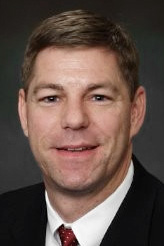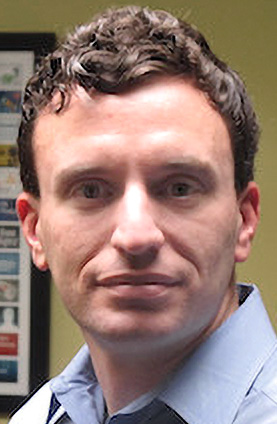

 During the sunrise period for .eu domains there was quite a bit of controversy, as a number of high profile names were grabbed by companies that had no legitimate right to them. One of the domains that caught my attention at the time was dublin.eu (see Irish Times article). So what about the .tel sunrise?
During the sunrise period for .eu domains there was quite a bit of controversy, as a number of high profile names were grabbed by companies that had no legitimate right to them. One of the domains that caught my attention at the time was dublin.eu (see Irish Times article). So what about the .tel sunrise?
Were companies like Lantec, who grabbed the dublin.eu domain, actively seeking high profile names this time round? more
The new Global Phishing Survey released by the Anti-Phishing Working Group (APWG) this month reveals that phishing gangs are concentrating their efforts within specific top level domains (TLDs), but also that anti-phishing policies and mitigation programs by domain name registrars and registries can have a significant and positive effect. The number of TLDs abused by phishers for their attacks expanded 7 percent from 145 in H2/2007 to 155 in H1/2008. The proportion of Internet-protocol (IP) number-based phishing sites decreased 35 percent in that same period, declining from 18 percent in the second half of 2007 to 13 percent in the first half of 2008. more
 Earlier this year, I wrote glowingly about the new CIRA whois policy, which took effect today and which I described as striking the right balance between access and privacy. The policy was to have provided new privacy protection to individual registrants - hundreds of thousands of Canadians - by removing the public disclosure of their personal contact information... Apparently I spoke too soon. more
Earlier this year, I wrote glowingly about the new CIRA whois policy, which took effect today and which I described as striking the right balance between access and privacy. The policy was to have provided new privacy protection to individual registrants - hundreds of thousands of Canadians - by removing the public disclosure of their personal contact information... Apparently I spoke too soon. more
 At ICANN San Juan, I found out from Tina Dam, ICANN's IDN Program Director, that she was putting together a live IDN TLD test bed plan which includes translations of the string .test into eleven written languages (Arabic, Chinese-simplified, Chinese-traditional, Greek, Hindi, Japanese, Korean, Persian, Russian, Tamil and Yiddish) and ten scripts (Arabic, Cyrillic, Devanagari, Greek, Han, Hangul, Hebrew, Hiragana, Katakana, Tamil)... Two days ago, ICANN provided an update on this project... more
At ICANN San Juan, I found out from Tina Dam, ICANN's IDN Program Director, that she was putting together a live IDN TLD test bed plan which includes translations of the string .test into eleven written languages (Arabic, Chinese-simplified, Chinese-traditional, Greek, Hindi, Japanese, Korean, Persian, Russian, Tamil and Yiddish) and ten scripts (Arabic, Cyrillic, Devanagari, Greek, Han, Hangul, Hebrew, Hiragana, Katakana, Tamil)... Two days ago, ICANN provided an update on this project... more
 No that's not really happening, Google is not buying VeriSign. But given Google's ravenous appetite for data, it might find VeriSign quite attractive. VeriSign has both root domain name servers and servers for the .com and .net top level domains (TLDs). VeriSign could data mine the queries coming into those servers and produce a very valuable real-time stream of what users on the net are doing... Google just bought Postini -- and one would have to be fairly naive to believe that Google does not intend to dredge through all... more
No that's not really happening, Google is not buying VeriSign. But given Google's ravenous appetite for data, it might find VeriSign quite attractive. VeriSign has both root domain name servers and servers for the .com and .net top level domains (TLDs). VeriSign could data mine the queries coming into those servers and produce a very valuable real-time stream of what users on the net are doing... Google just bought Postini -- and one would have to be fairly naive to believe that Google does not intend to dredge through all... more
ICANN today has made a formal demand stating: "Given the magnitude of the issues that have been raised, and their potential impact on the security and stability of the Internet, the DNS and the .com and .net top level domains, VeriSign must suspend the changes to the .com and .net top-level domains introduced on 15 September 2003 by 6:00 PM PDT on 4 October 2003. Failure to comply with this demand by that time will leave ICANN with no choice but to seek promptly to enforce VeriSign's contractual obligations." What follows is a collection of commentaries made around the net and by experts in response to today's announcement...
more
 In May of this year, I questioned whether the continued legal maneuvering of a company called Altanovo Domains Ltd. (Altanovo) could further delay the launch of .web. After reading its second Independent Review Process (IRP) complaint, and ICANN's response, it seems that the unfortunate answer is a resounding "yes," or at least that is Altanovo's intent. more
In May of this year, I questioned whether the continued legal maneuvering of a company called Altanovo Domains Ltd. (Altanovo) could further delay the launch of .web. After reading its second Independent Review Process (IRP) complaint, and ICANN's response, it seems that the unfortunate answer is a resounding "yes," or at least that is Altanovo's intent. more
 Back in 2014, to foster innovation and to better the choice in domain names, ICANN introduced new generic top-level domains through its New gTLD Program. It was a monumental move that enabled businesses, individuals, and communities across the globe to mark their presence on the Internet. Allowing users to be present digitally in their chosen language (non-ASCII characters and scripts) gave opportunities to local businesses, civil societies, and governments to better serve their communities. more
Back in 2014, to foster innovation and to better the choice in domain names, ICANN introduced new generic top-level domains through its New gTLD Program. It was a monumental move that enabled businesses, individuals, and communities across the globe to mark their presence on the Internet. Allowing users to be present digitally in their chosen language (non-ASCII characters and scripts) gave opportunities to local businesses, civil societies, and governments to better serve their communities. more
 On July 2, 2002, Damien Cave published an interview on Salon.com with John Gilmore, "original 'cypherpunk' and all-around Internet supergeek," titled "It's time for ICANN to go." In this wide-ranging interview, Gilmore -- an early employee of Sun Microsystems who also co-founded Cygnus Software (acquired by Red Hat) and was an early supporter of the Electronic Frontier Foundation and the Internet Society (ISOC) -- offered blunt insight and eye-opening historical detail... more
On July 2, 2002, Damien Cave published an interview on Salon.com with John Gilmore, "original 'cypherpunk' and all-around Internet supergeek," titled "It's time for ICANN to go." In this wide-ranging interview, Gilmore -- an early employee of Sun Microsystems who also co-founded Cygnus Software (acquired by Red Hat) and was an early supporter of the Electronic Frontier Foundation and the Internet Society (ISOC) -- offered blunt insight and eye-opening historical detail... more
 The domain name system is not the place to police speech. ICANN is legally bound not to act as the Internet's speech police, but its legal commitments are riddled with exceptions, and aspiring censors have already used those exceptions in harmful ways. This was one factor that made the failed takeover of the .ORG registry such a dangerous situation. But now, ICANN has an opportunity to curb this abuse and recommit to its narrow mission of keeping the DNS running... more
The domain name system is not the place to police speech. ICANN is legally bound not to act as the Internet's speech police, but its legal commitments are riddled with exceptions, and aspiring censors have already used those exceptions in harmful ways. This was one factor that made the failed takeover of the .ORG registry such a dangerous situation. But now, ICANN has an opportunity to curb this abuse and recommit to its narrow mission of keeping the DNS running... more
 Over the years, the Kenyan Network Information Center (KeNIC) has struggled to reach the 100,000 mark in .ke Kenya country code domain registrations. Many reasons have been given for this shortfall, among them pricing, competition from generic Top-Level Domains (gTLDs) like .com and .org, and also competition from Geographic domains like the new .africa. Also, not opening up the second level for registration has been cited as one of the reasons for the low number. more
Over the years, the Kenyan Network Information Center (KeNIC) has struggled to reach the 100,000 mark in .ke Kenya country code domain registrations. Many reasons have been given for this shortfall, among them pricing, competition from generic Top-Level Domains (gTLDs) like .com and .org, and also competition from Geographic domains like the new .africa. Also, not opening up the second level for registration has been cited as one of the reasons for the low number. more
 There is growing concern about how ICANN will comply with the EU General Data Protection Regulation (GDPR), whose enforcement sanctions come into force in May of 2018. How will ICANN comply with GDPR without unduly restricting global Internet users' access to the public WHOIS database? For nearly the past 20 years, Internet users, businesses, law enforcement and consumer protection agencies have relied on WHOIS as a necessary resource. more
There is growing concern about how ICANN will comply with the EU General Data Protection Regulation (GDPR), whose enforcement sanctions come into force in May of 2018. How will ICANN comply with GDPR without unduly restricting global Internet users' access to the public WHOIS database? For nearly the past 20 years, Internet users, businesses, law enforcement and consumer protection agencies have relied on WHOIS as a necessary resource. more
 Google has recently announced the release of Nomulus, its free, open source registry software, triggering discussion of its impact on the industry. Afilias has over 15 years of experience in registry operations, and offers the following initial thoughts... First, free registry software is not new.CoCCA has offered this option for years, and TLDs such as .CX (Christmas Island) and .KI (Kiribati) use it. It is supported on a "best efforts" basis and appears to meet the limited needs of a few small operators. more
Google has recently announced the release of Nomulus, its free, open source registry software, triggering discussion of its impact on the industry. Afilias has over 15 years of experience in registry operations, and offers the following initial thoughts... First, free registry software is not new.CoCCA has offered this option for years, and TLDs such as .CX (Christmas Island) and .KI (Kiribati) use it. It is supported on a "best efforts" basis and appears to meet the limited needs of a few small operators. more
 On the morning of Wednesday 15th October, the The Domain Name Association (the DNA) held an important working group meeting during ICANN 51 Los Angeles. The topic was to discuss several operational issues between registries and registrars. The meeting's unofficial ongoing name is the Registry-Registrar Operations Working Group. The meeting was a continuation of an inaugural meeting that was held back in June of this year, and covered in a Industry Association: An Implementation Model circulated by the DNA from September 17, by Executive Director Kurt Pritz. more
On the morning of Wednesday 15th October, the The Domain Name Association (the DNA) held an important working group meeting during ICANN 51 Los Angeles. The topic was to discuss several operational issues between registries and registrars. The meeting's unofficial ongoing name is the Registry-Registrar Operations Working Group. The meeting was a continuation of an inaugural meeting that was held back in June of this year, and covered in a Industry Association: An Implementation Model circulated by the DNA from September 17, by Executive Director Kurt Pritz. more
 Today, anyone can use WHOIS to identify the organization or person who registered a gTLD domain name, along with their postal address, email address, and telephone number. Publishing this data has long been controversial, creating a system riddled with problems. On one hand, anonymous access to all WHOIS data enables misuse by spammers and criminals and raises concerns about personal privacy. On the other hand, incomplete or false WHOIS data prolongs Internet outages and leaves crime victims with little recourse. more
Today, anyone can use WHOIS to identify the organization or person who registered a gTLD domain name, along with their postal address, email address, and telephone number. Publishing this data has long been controversial, creating a system riddled with problems. On one hand, anonymous access to all WHOIS data enables misuse by spammers and criminals and raises concerns about personal privacy. On the other hand, incomplete or false WHOIS data prolongs Internet outages and leaves crime victims with little recourse. more